Weekend Escape: Kalambaka and the Monasteries of Meteora
A perfect weekend getaway: wander among...

© GEO Pictorial/George S Blonsky
We wake before dawn, pull on our thermal underwear and stand motionless for ages in the frigid breeze coming down the slopes of Mount Belles on a boat in the middle of Lake Kerkini. But when the sun slowly creeps over the horizon – lighting up the sky in shades that city-dwellers have forgotten exist – we finally begin to make out shadows of winged creatures on the horizon. We have company. A flock of pelicans slides to a halt on the glassy surface of the water, coming so close that we can make out heir unkempt ‘hairdos’ and their bright red beaks. It’s our first introduction to birdwatching!
Most people think of birdwatching as a hobby reserved for those with specialized knowledge and a lot of patience. But Kerkini – one of Europe’s most important wetlands and part of the Natura 2000 network of protected sites – grants you sights seemingly out of a David Attenborough series, even if you visit it like we did: without prior experience or sophisticated telephoto lenses, just a pair of binoculars, a mobile phone camera, and the company of an experienced guide and photographer.
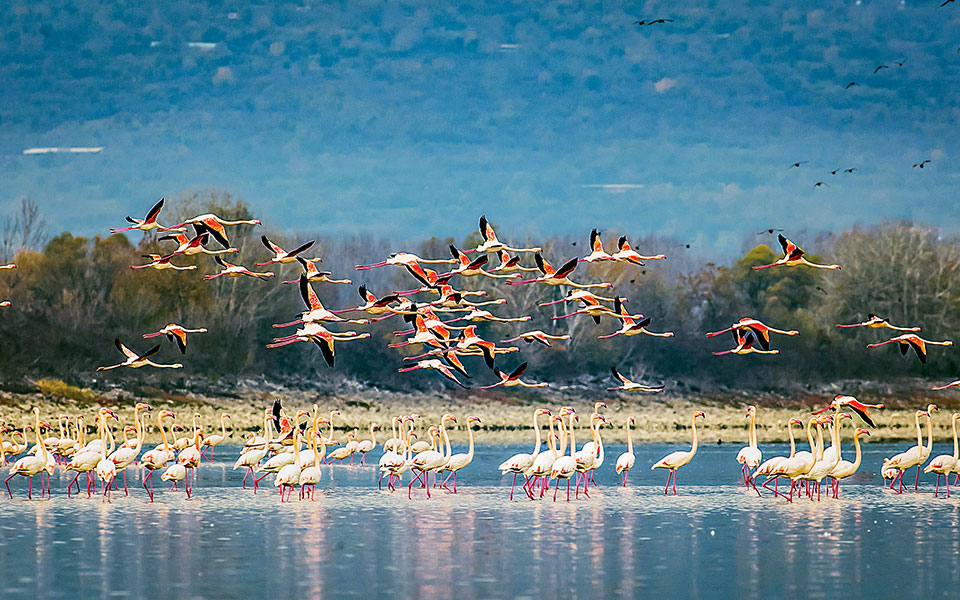
© GEO Pictorial/George S Blonsky
Impressively, this artificially created freshwater lake attracts over 320 species of birds (of the 450 known to visit or inhabit Greece) and 80,000 human visitors per year. Here one sees sights that call to mind more tropical climes such as flocks of pink flamingos strutting through the water or soaring overhead. You hear the sound made by thousands of ducks when they take flight at once: like a huge bucket filled with glass beads being tipped over. You may even be lucky enough to see lesser white-fronted geese in the distance, one of the rarest birds in Europe.
In the morning you get a plava (a type of flat-bottomed boat) from Mandraki, Kerkini’s harbor, and cross the lake in order to see the birds ‘go fishing’. In the afternoons, with a jeep you return to the banks and wait hidden in the reeds, on the off-chance you see an otter pass by. Here you can see the water buffalo grazing, or take a selfie with a coypu (a type of large semiaquatic rodent) munching on reeds and completely indifferent to your presence.

© GEO Pictorial/George S Blonsky
How does one get get up close to the world of birds? With respect and ideally without the ‘scent of civilization’ on you. The smell of soap or perfume betrays one’s presence and drives the birds away. Many birdwatchers conceal themselves in hides on the banks while it is still dark so that at first light the birds are unaware of their presence.
Christos Vlachos, one of the top wildlife photographers in Greece explains, “At first you take photographs as records: you are interested simply in getting the shot and getting up close. As you acquire experience you want to pull back to give the bird space to move freely. You need to know how long you will be across from it. You must not pressure it, then you get the nicest images. The greatest joy comes in those moments when the creature in front of you continues doing what it would do if you weren’t there.”
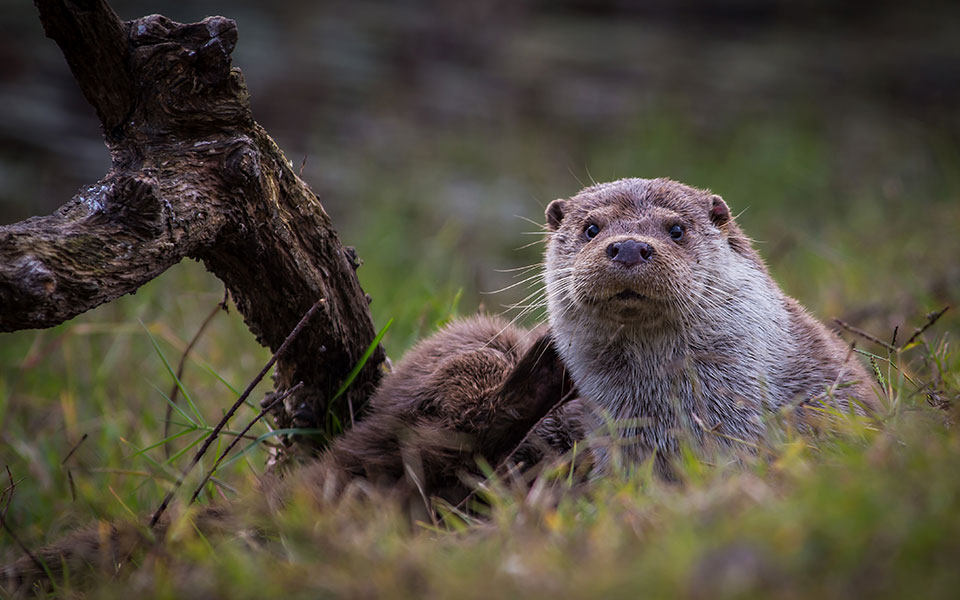
© GEO Pictorial/George S Blonsky
But what is it that drives people to invest in pricey equipment and to travel across the planet to visit a wetland? In part, it is that the behavior of the birds is so fascinating. It so enchanted British landscape and wildlife photographer George Blonsky that he left his career as a photojournalist, and since 2010 has been organizing wildlife photography workshops with small groups of amateurs and professionals from all over the world.
“We are interested in observing how they eat, how they flirt, how they mate and how they raise their young. There is romance among the monogamous species, such as the storks and the flamingos. They can meet, migrate for 6-7 months apart, and then return to the same nest. In Kerkini birds come from Northern Europe for the winter. The stay until the spring and then return. In the summer species come here from Africa, such as bee-eaters: you’ll see the male catch a bee in midair, remove the stinger and feed it to the female. The great crested grebes, when they are reunited, perform an incredible dance together, each mirroring the other, rubbing their beaks. This love story is fascinating.”
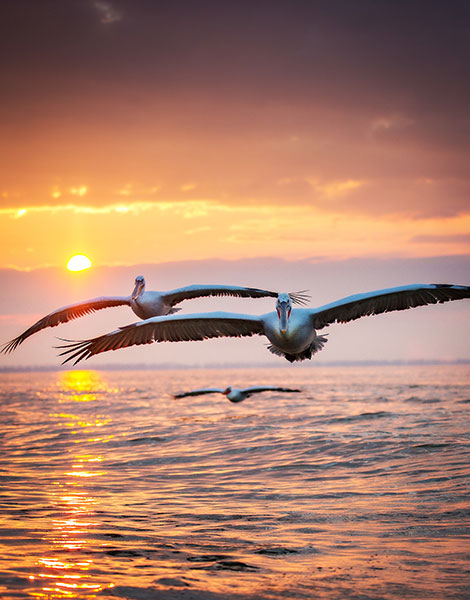
© GEO Pictorial/George S Blonsky
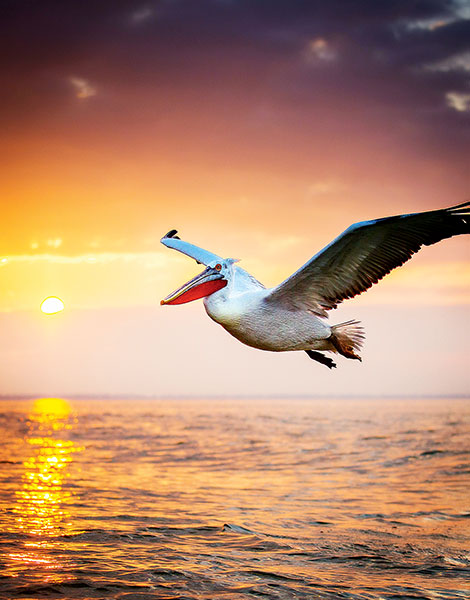
© GEO Pictorial/George S Blonsky
Birdwatching requires time and money, and that’s why the majority of birdwatchers are older – and very dedicated. They keep lists of species that they have seen in their countries, in their cities, in a specific wetland, even from their rooftops. But it is also a lifestyle, as it is connected with travel and making friends.
In the spring, the forest neighboring the wetland is full of life. More than ten species nest here. “They all have the same star sign,” the locals joke. The last count found 8,000-10,000 nests in which on average 2-4 hatchlings are raised. Great white pelicans, cormorants, pygmy cormorants, herons, glossy ibises and Eurasian spoonbills are among the birds that raise their young in the trees, while common coots and common moorhens build floating nests. They are all so focused on feeding that they pay no attention even as we pass by them in a boat. At the time of our visit, the first chicks are beginning to take flight. In four months they will be ready to cross continents.
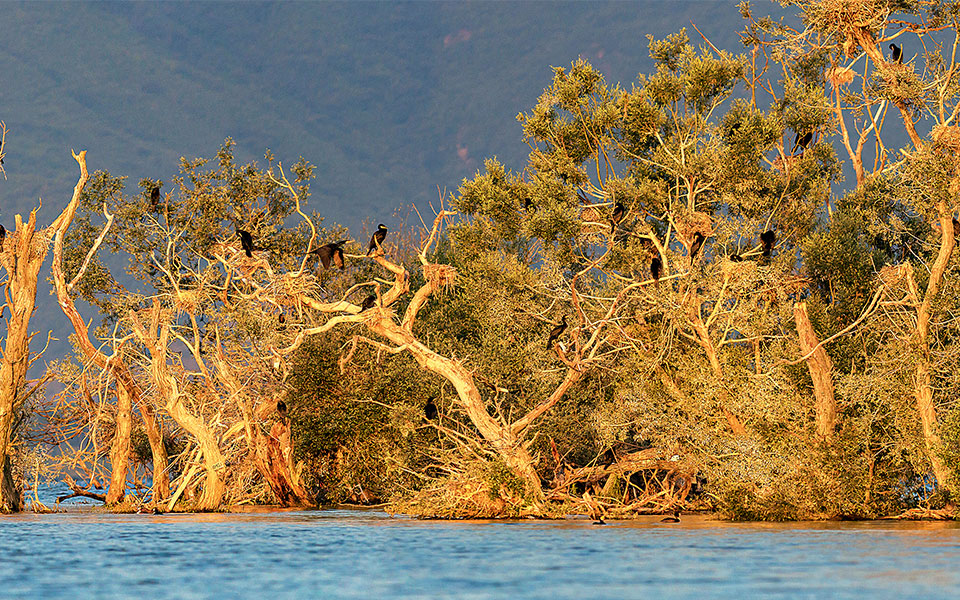
© GEO Pictorial/George S Blonsky
The artificial lake was created in 1932, while the irrigation systems and anti-flood defenses were completed in the 1980s. Thanks to its shallow depths, the gentle slopes of the surrounding landscape and the nutrition it provides, the lake developed into one of the most popular stops for migratory birds, which use the wetland to rest and feed during their migratory journeys.
Until the early 1990s one could hear shots ring out daily from local hunters, and in the wider area there were only four small guesthouses. The first organized attempt to protect the lake came in 1989, when an enlightened local, Giannis Reklos, founded the Cultural – Ecological Association of Kerkini. Today the wetland is protected by the Lake Kerkini Management Authority which also helps educate the public. Reklos helped the locals realize the value of the wetland area and turned their attention to the economic benefits that could be reaped through environmentally friendly forms of development.
His vision to bring more and more visitors to the area became a reality in 1995 with the opening of the agritourism business Oikoperiigitis, which offers a wide variety of activities to guests. Today the guesthouse’s lounge is a hub where photographers and birdwatchers exchange tales after days out on the lake. Following the success of Oikoperiigitis, the rise in guesthouses was dramatic: today about 30 eco-tourism-minded guesthouses operate in the area.

© GEO Pictorial/George S Blonsky
Kerkini is a case study in how sustainable development can shift mindsets. We met hunters who packed away their guns and became protectors of the birds. These days every summer volunteers arrive from all over Greece and do important work, such as creating artificial platforms to help the pelicans reproduce.
What is most inspiring, however, is the way they transmit the residents’ vision and inspire ever more people to become birdwatchers, photographers and – why not – guardians of the birds. This year, we just might join them.
Tip: It is worth passing by the Kerkini Management Authority’s information center, to see the exhibition space and to pick up a map and birdwatching guide. You can also request guided tours of the lake.
A perfect weekend getaway: wander among...
A springtime haven of wildlife, scenic...
One of the most impressive canyons...
Four guesthouses set in unique landscapes,...